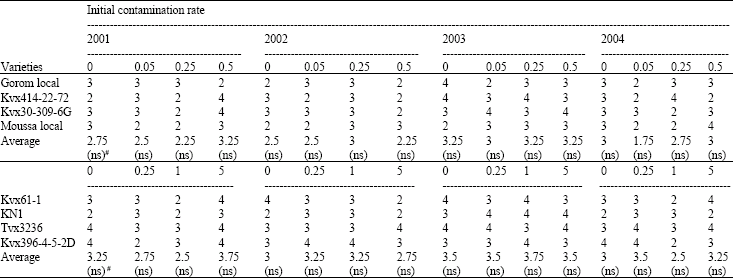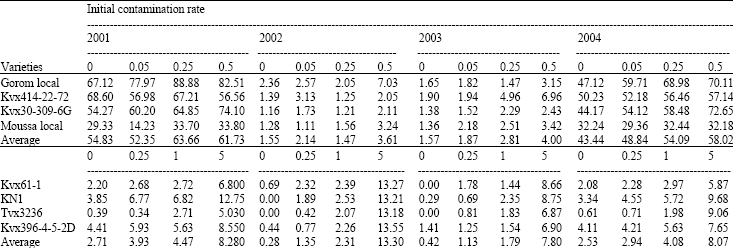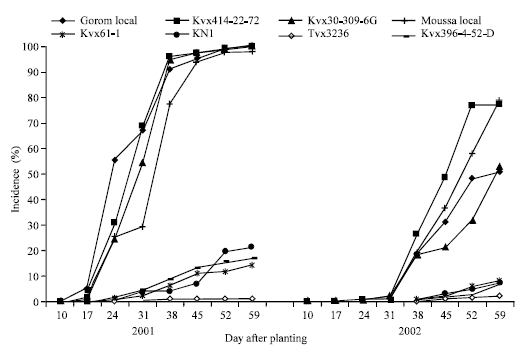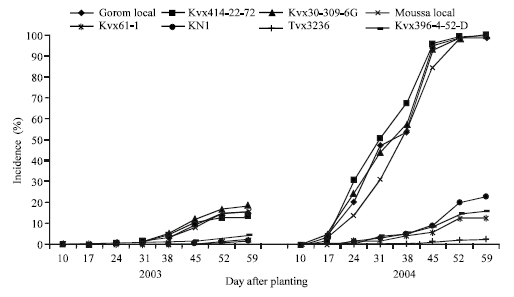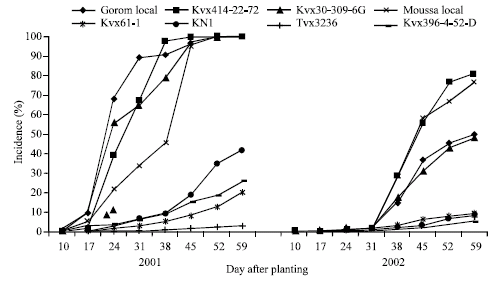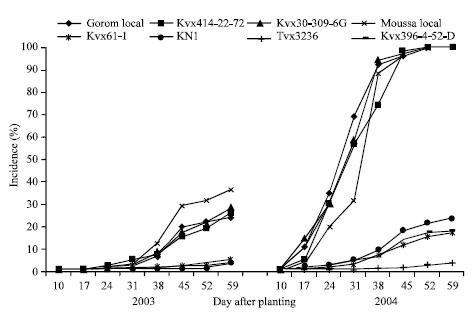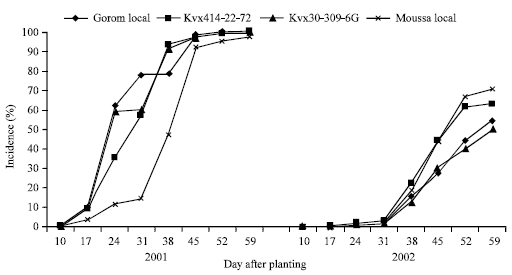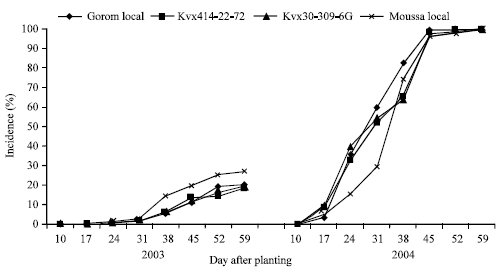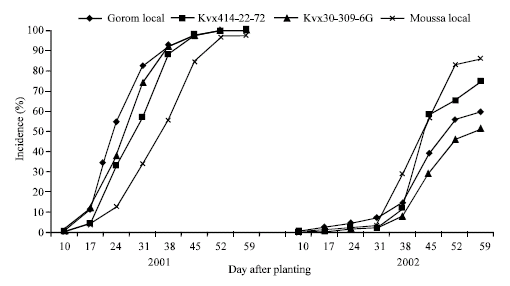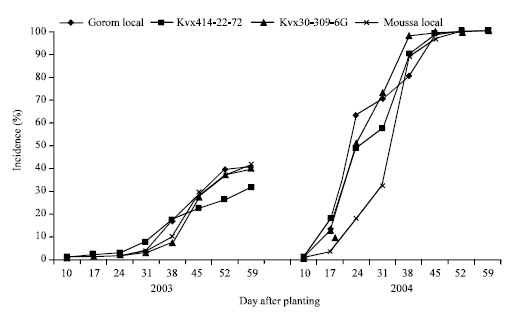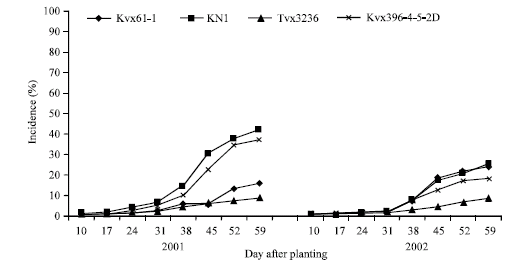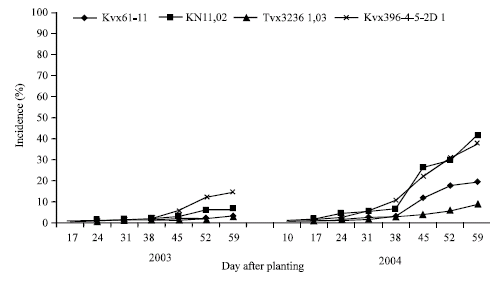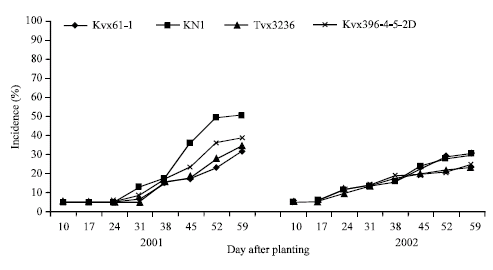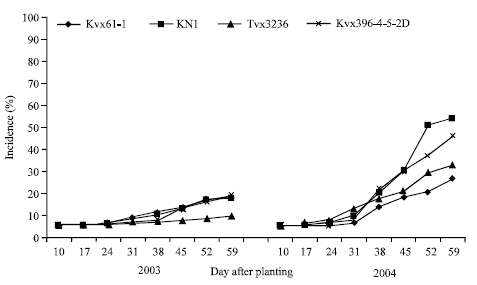Research Article
Effect of Cowpea Seeds Contamination Rate by the Cowpea aphid borne mosaic virus on Epidemics Development
Institut de l Environnement et de Recherches Agricoles, INERA, 01 BP 476 Ouagadougou 01, Burkina Faso
J. Zabre
Institut de l Environnement et de Recherches Agricoles, INERA, 01 BP 476 Ouagadougou 01, Burkina Faso
R. J. Millogo
UFRIS VT, Departement de Biologie et Ecologie Vegetales, Universit6 de Ouagadougou, 03 BP 7021 Ouagadougou 03, Burkina Faso
S. Ginko
UFRIS VT, Departement de Biologie et Ecologie Vegetales, Universit6 de Ouagadougou, 03 BP 7021 Ouagadougou 03, Burkina Faso
G. Konate
Institut de l Environnement et de Recherches Agricoles, INERA, 01 BP 476 Ouagadougou 01, Burkina Faso










